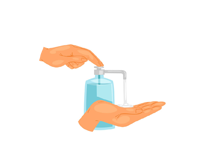Indocyanine Green
Introduction
Indocyanine Green (ICG) is a medical diagnostic dye used primarily in imaging procedures. It is commonly administered intravenously to help visualize blood flow, liver function, and tissue perfusion during various medical and surgical procedures. ICG binds to plasma proteins and emits fluorescence when exposed to infrared light, allowing real-time imaging with near-infrared cameras. This agent is particularly valuable in liver function tests, cardiac output monitoring, ophthalmic angiography, and cancer surgeries for identifying sentinel lymph nodes and tumor margins.
Medicine Not Available for Indocyanine Green
Uses of Indocyanine Green
- Assessing liver function and hepatic blood flow
- Ophthalmic angiography (retinal imaging)
- Cardiac output measurement
- Intraoperative angiography in surgery
- Detection of sentinel lymph nodes in cancer surgeries
- Tissue perfusion analysis during reconstructive procedures
How Indocyanine Green Works
Indocyanine Green is injected into the bloodstream, where it binds rapidly to plasma proteins. When exposed to near-infrared light, it fluoresces, allowing physicians to capture detailed real-time images of blood flow, organ function, or tissue perfusion using specialized imaging systems.
Benefits of Indocyanine Green
- Provides real-time imaging for precise diagnostics
- Useful in assessing organ function, especially liver
- Helps guide surgeons during tumor or vascular surgeries
- Minimally invasive with quick clearance from the body
- Low risk of systemic toxicity when used correctly
How to Take Indocyanine Green
Indocyanine Green is administered intravenously by a trained healthcare professional in a clinical or hospital setting. The dosage is determined based on the diagnostic procedure and patient’s condition. The injection is followed by imaging using a near-infrared fluorescence camera system.
Type of Dosage Available
- Injection (lyophilized powder for reconstitution)
Side Effects of Indocyanine Green
- Nausea or vomiting
- Flushing or warm sensation
- Allergic reaction (rash, itching, difficulty breathing)
- Hypotension (low blood pressure)
- Anaphylactic reaction (rare but serious)
- Injection site irritation
Safety Advice
- Inform doctor if allergic to iodine or contrast dyes
- Not recommended in severe liver or kidney disease without evaluation
- Use caution in patients with cardiac issues
- Should only be administered under medical supervision
- Pregnant or breastfeeding women should consult their doctor
- Avoid repeated use in short intervals
Frequently Asked Questions (FAQs)
Q: What is Indocyanine Green used for?
A: It is used for imaging blood flow, liver function, and in surgeries to visualize organs and tumors.
Q: Is Indocyanine Green safe?
A: Yes, when used by trained professionals. However, allergic reactions can occur, especially in iodine-sensitive individuals.
Q: How is it administered?
A: It is given intravenously during diagnostic or surgical procedures.
Q: How quickly does it work?
A: It starts working within minutes of injection, providing real-time imaging capabilities.
Q: Can it be used in children?
A: It may be used in pediatric cases under strict medical supervision and indication.
Download India's most affordable pharmacy app
- Compare with medicine prices
- Save upto 90% on your medicine bills

Temperature Controlled storage and delivery

Regular Sanitization

Disinfected Packaging









 Added!
Added!